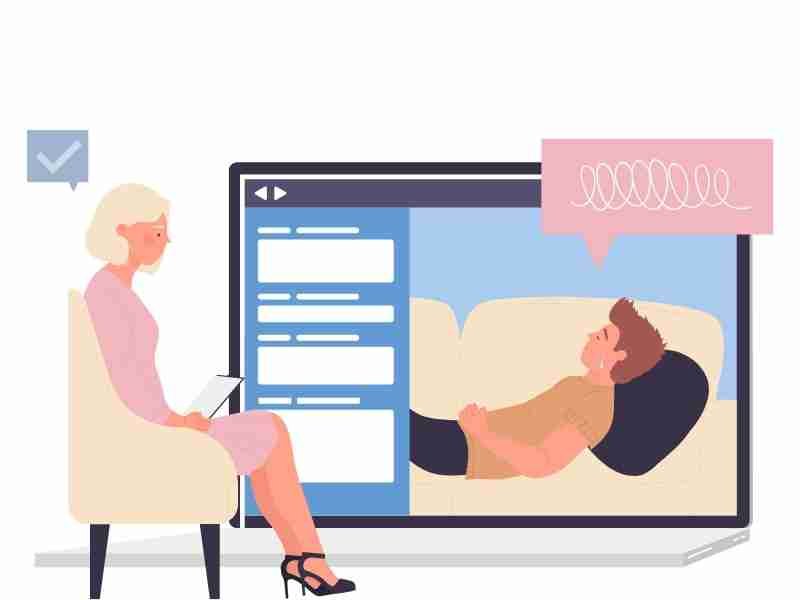Teletherapy, the provision of mental health services through digital platforms, has revolutionized the field of psychotherapy. Initially perceived as a supplementary option to in-person sessions, teletherapy has gained significant traction, especially in light of the COVID-19 pandemic. This unexpected global event accelerated the adoption of remote healthcare solutions, making teletherapy a mainstream approach to mental health care. As we navigate through this transformative period, it is crucial to understand the advantages, limitations, and best practices associated with teletherapy.
The Evolution of Teletherapy
Teletherapy’s roots can be traced back to early telecommunication technologies, which allowed mental health professionals to offer support via telephone. Over time, advancements in internet technology and video conferencing capabilities have enabled more interactive and effective forms of teletherapy. Key milestones include the development of secure, HIPAA-compliant platforms and the integration of teletherapy into mainstream healthcare systems. These technological strides have not only made teletherapy feasible but have also enhanced its accessibility and effectiveness.
Also check: How to Create a Mental Health Wellness Plan
Advantages of Teletherapy
One of the primary advantages of teletherapy is its accessibility. Individuals living in remote or underserved areas can now access mental health services that were previously unavailable to them. This is particularly beneficial for those with mobility issues or those who live in areas with a shortage of mental health professionals. Additionally, teletherapy offers unparalleled convenience, allowing clients to attend sessions from the comfort of their own homes, thereby eliminating the need for travel and reducing time constraints.
Cost-effectiveness is another significant benefit. Teletherapy often reduces overhead costs for providers, which can translate to lower fees for clients. Furthermore, the flexibility of teletherapy allows for more frequent and shorter sessions, which can be financially advantageous for both parties. The anonymity and privacy offered by teletherapy can also be a critical factor for individuals who may feel stigmatized seeking mental health services. This level of discretion can encourage more people to seek the help they need.
The continuity of care provided by teletherapy is invaluable during crises, such as the COVID-19 pandemic. During such times, the ability to continue therapy without interruption is crucial for maintaining mental health and well-being. Teletherapy ensures that therapeutic relationships can be sustained and that clients receive consistent support.
Also check: Understanding Anxiety Disorders
Limitations of Teletherapy
Despite its many benefits, teletherapy is not without its limitations. Technical challenges, such as poor internet connectivity or lack of access to necessary devices, can hinder the effectiveness of teletherapy sessions. This digital divide can disproportionately affect lower-income individuals and those living in rural areas, exacerbating existing disparities in mental health care access.
Confidentiality and data security are also significant concerns. While most teletherapy platforms are designed to be secure, there is always a risk of data breaches and unauthorized access. Ensuring the privacy of sensitive information requires stringent security measures and continuous vigilance.
The absence of non-verbal communication cues is another limitation of teletherapy. Facial expressions, body language, and other non-verbal signals play a crucial role in the therapeutic process. The inability to fully observe these cues can make it challenging for therapists to assess clients’ emotions and reactions accurately.
Moreover, building a strong therapeutic alliance can be more difficult in a virtual setting. The lack of physical presence and potential technical distractions can impede the development of rapport and trust between therapist and client.
Best Practices for Effective Teletherapy
To maximize the benefits of teletherapy, it is essential to follow best practices that ensure effective and secure service delivery. Creating a private and secure environment for sessions is paramount. Both therapists and clients should have a quiet, distraction-free space where they can conduct or participate in sessions without interruptions.
Selecting the right technology platform is crucial. Therapists should choose platforms that are HIPAA-compliant and user-friendly, ensuring that both parties can navigate the technology with ease. Providing training for both therapists and clients can help them become comfortable with the digital tools and processes involved in teletherapy.
Building rapport and engagement in a virtual setting requires intentional effort. Therapists can use techniques such as maintaining eye contact, being mindful of their tone and body language, and actively engaging clients in the conversation. Incorporating interactive elements, such as screen sharing or digital worksheets, can also enhance the therapeutic experience.
Case Studies and Real-world Applications
Numerous case studies demonstrate the success of teletherapy in various contexts. For example, a rural mental health clinic implemented teletherapy to reach clients in remote areas, resulting in a significant increase in service utilization and client satisfaction. Testimonials from both therapists and clients highlight the positive impact of teletherapy on accessibility and convenience.
Comparative outcomes with traditional therapy indicate that teletherapy can be equally effective, particularly for common issues such as anxiety and depression. Clients report high levels of satisfaction with the flexibility and privacy that teletherapy offers, often noting that it makes it easier for them to integrate therapy into their daily lives.
Conclusion
The rise of teletherapy represents a significant shift in the delivery of mental health services. Its advantages, such as increased accessibility, cost-effectiveness, and continuity of care, make it an appealing option for many. However, it is essential to address its limitations, including technical challenges and issues with confidentiality, to ensure its effectiveness. By adhering to best practices, mental health professionals can provide high-quality care that meets the needs of their clients. As we look to the future, the continued integration of teletherapy into mental health care will likely play a vital role in expanding access and improving outcomes for individuals worldwide.
References
- American Psychological Association. (2020). Telepsychology Practice Guidelines. Retrieved from APA.
- Yellowlees, P., Shore, J., & Roberts, L. (2020). Telemedicine can make healthcare more accessible. Harvard Business Review. Retrieved from HBR.
- Shore, J. H., Yellowlees, P., Caudill, R., Johnston, B., Turvey, C. L., Mishkind, M. C., & Hilty, D. M. (2018). Best practices in videoconferencing-based telemental health. Telemedicine and e-Health, 24(11), 827-832. Retrieved from Liebertpub.
- Seritan, A. L., & Heiry, M. (2020). Telepsychiatry and COVID-19: impact and implications. Academic Psychiatry, 44(5), 644-646. Retrieved from SpringerLink.
- Batastini, A. B., Paprzycki, P., Jones, A. C., & MacLean, N. (2021). Are videoconferenced mental and behavioral health services just as good as in-person? A meta-analysis of a fast-growing practice. Clinical Psychology Review, 83, 101944. Retrieved from ScienceDirect.









